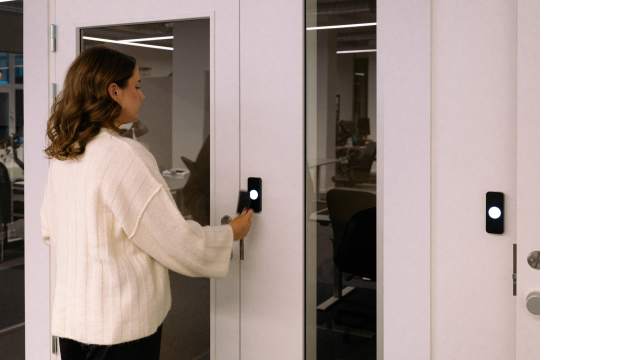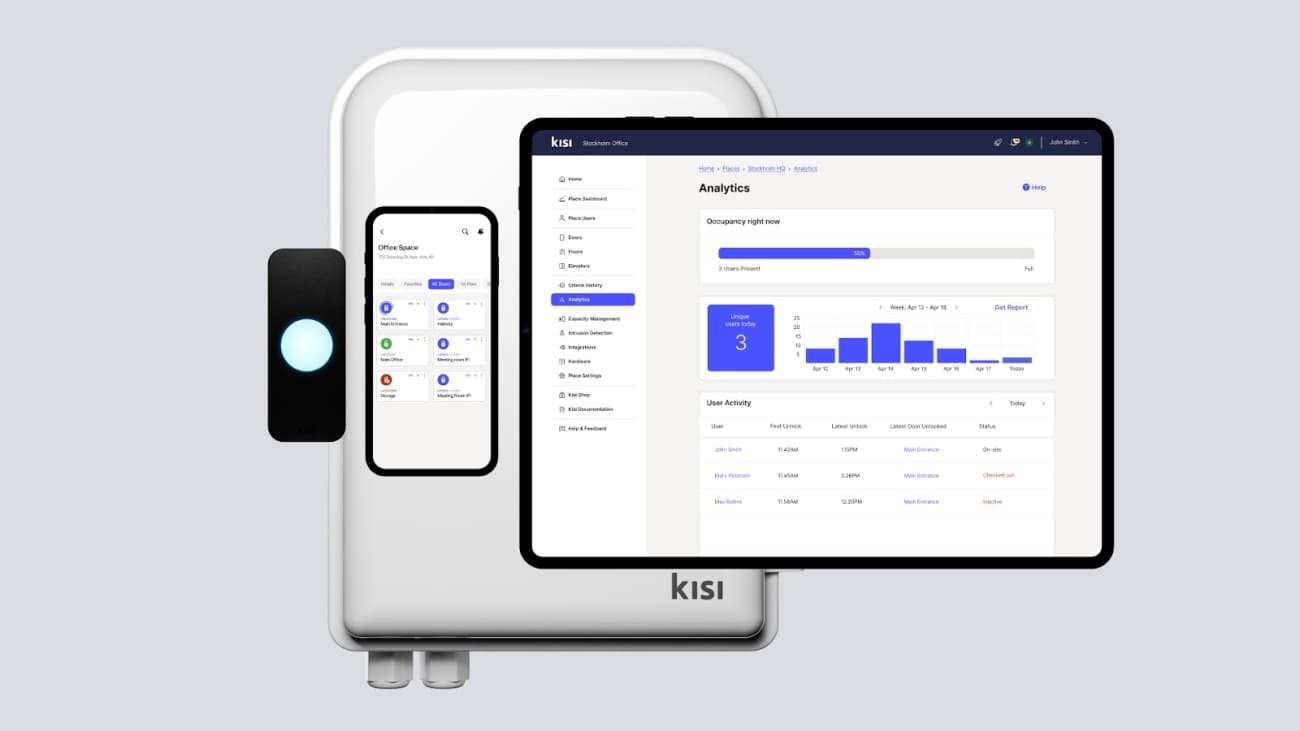The security tech landscape is evolving faster than ever. According to research by Foundry, 69% of security leaders think it’s becoming “more complex” to determine which security tools and solutions are best for their company.
This complexity is partly because the threats facing businesses are ever-changing, but also because security tech now has a bigger purpose than just protection. It also makes your work environment more accessible and welcoming — crucial for safely getting people back into their physical workspaces.
Having a good understanding of the security tech landscape — including the latest trends and innovations — will set you up for success. You’ll be able to allocate budget where it’s most effective and future-proof your security setup so it meets your business needs for years to come.
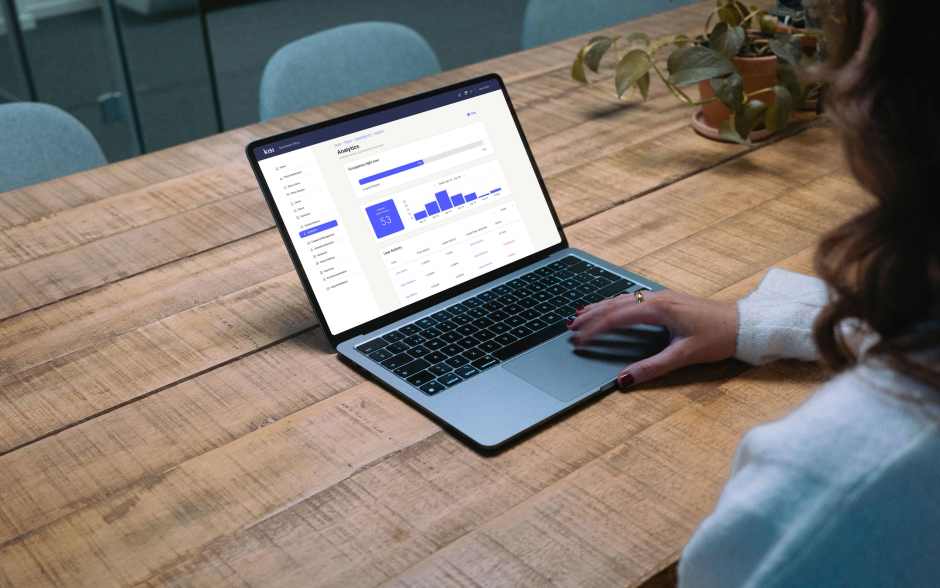
What is security technology? #
Security technology refers to the tools and solutions that implement security protocols in buildings. It helps reduce the risk of security breaches by preventing unauthorized access and deterring criminal behavior. In the event of a security breach, it captures evidence and provides immediate alerts, allowing companies to respond quickly.
There are two main categories: physical and cyber security technology.
Physical security technology #
Physical security technology protects buildings and property against physical threats, like intruders and thieves. It prevents unauthorized access to your buildings, and enables fast incident responses in the event of a security breach. It’s a crucial investment: in the last 12 months, 32% of companies have experienced theft of company property, and 26% have experienced malicious damage to their property.
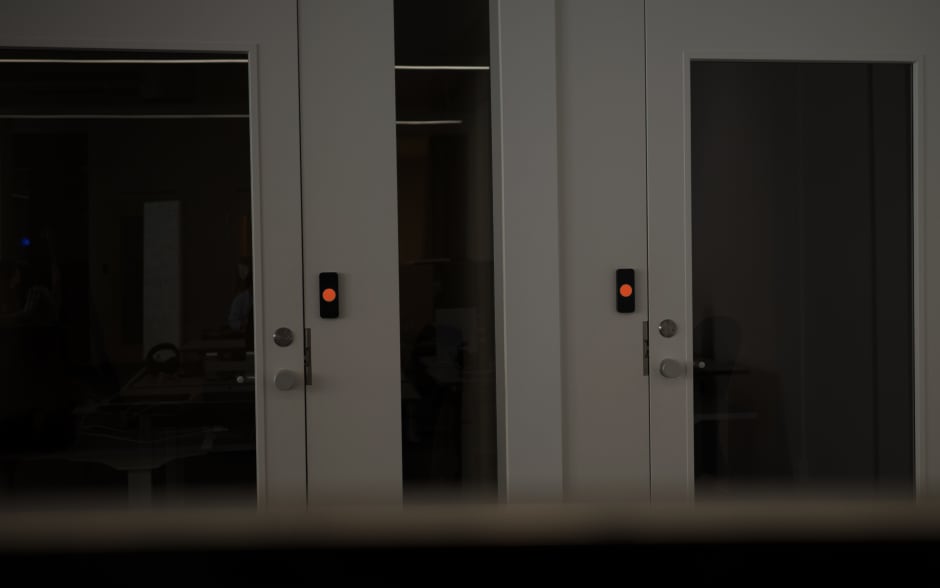
Physical security tech also mitigates risk for businesses. It provides data insights and reports on potential and actual threats, which allows companies to meet the standards required to comply with security standards and regulations.
As well as protecting against threats, this tech connects people and the spaces they use by improving their experience in the physical space. They can access and move between spaces easily and safely.
Physical security technology examples
- Access control systems: Tools that manage people’s entry into physical spaces such as offices or other workspaces.
- Surveillance systems: Technology to monitor and record activities within your space for security, safety, or investigative purposes.
- Alarm and emergency systems: Security devices that detect and alert you to threats or emergencies, typically through sound, visual, or remote notifications.
Cybersecurity technology #
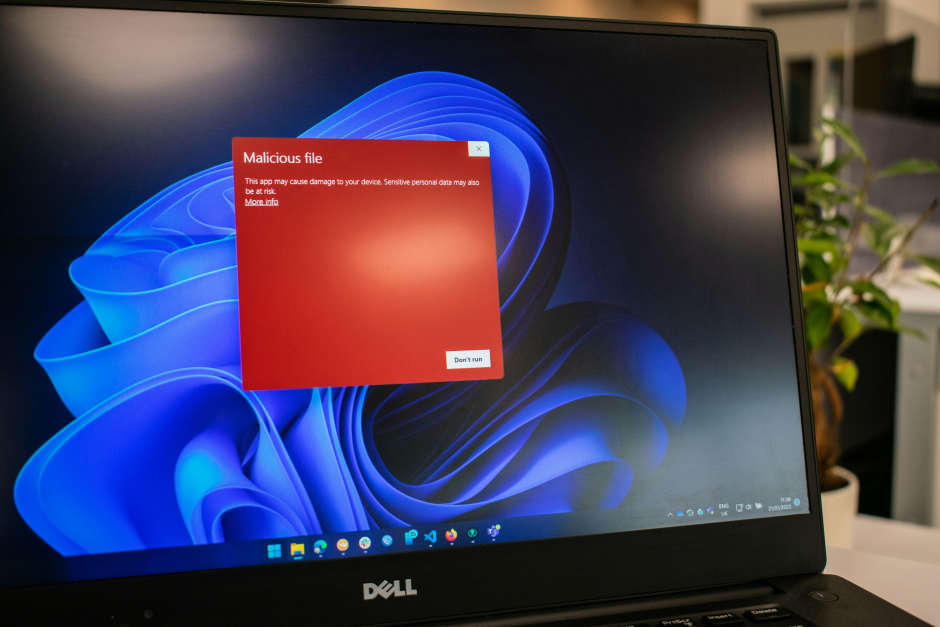
Cybersecurity technology protects your business networks, data, and devices from malicious attacks, data leaks, and fraudulent activity.
Digital security is just as important as physical security — in the last 12 months, 31% of companies experienced unauthorized access to their company’s data, files, or networks. Your company and employee data is one of your most valuable resources, which is why cybersecurity tech is an ever-growing field (and line in your budget).
Cybersecurity technology examples
- Ransomware detection: Software designed to identify the presence of ransomware threats within your computer network. It aims to stop you falling victim to unauthorized encryption of data and extortion attempts
- Spyware monitoring: Technology to detect and remove covertly installed programs that gather information about a person’s activities on a computer or network without their consent
- Network security: Tech to continuously monitor and analyze network traffic and infrastructure. It helps identify potential security threats and troubleshoot issues in real-time
Security technology trends dominating the industry #
1. Security systems for hybrid work #
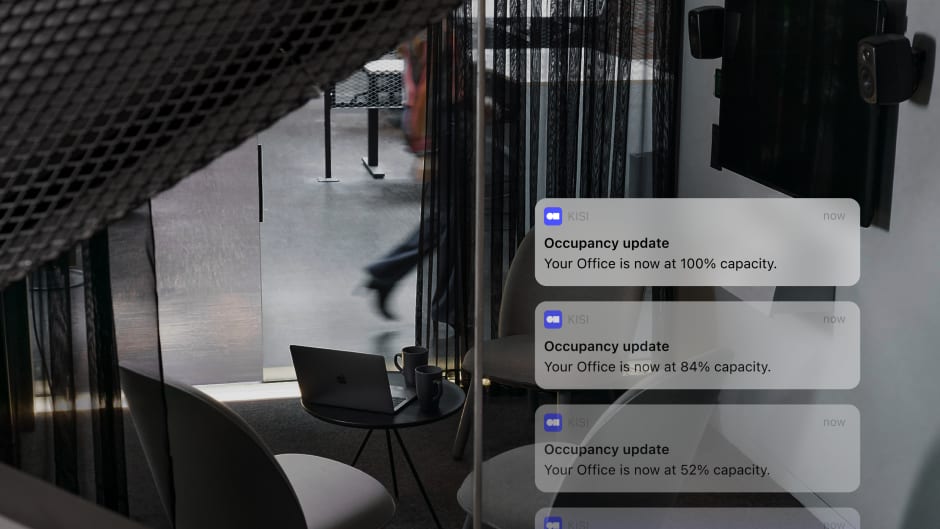
Security systems for hybrid workplaces typically include access control technology that’s flexible and customizable — perfect for when different people and user groups use your workplace each day rather than following more established or predictable working patterns.
The pandemic sent most companies remote in 2020, but now, four years later, we’re seeing a shift back towards office or co-located working. For some companies (like Goldman Sachs), that means a total return to office mandate, while others (like Apple and Salesforce) are taking a hybrid approach, requesting employees come in for a certain number of days each week.
With hybrid working becoming increasingly common, companies need their security systems to adapt to the new ways of using their office spaces. The same people aren’t using the same spaces every day, so companies need a way to track and report on building occupancy and employee attendance. They also want to be confident their employees can access the spaces they need, when they need it.
That’s why access control technology for hybrid workplaces is a major security tech trend for 2025. Hybrid work security systems like Kisi provide global access control, so you can remotely manage access to all your workspaces for all users and groups, anywhere. They also offer analytics data so you can track and report on space utilization and occupancy live and over time, to support and understand the success of your return to office initiatives.
2. Unified security systems #
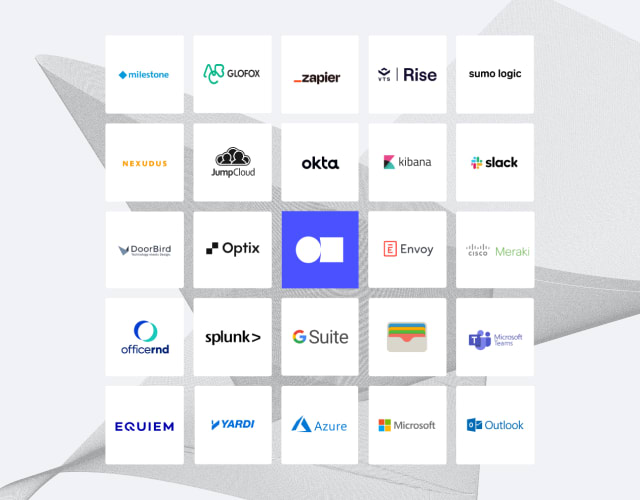
Access control systems traditionally worked in isolation, but now companies are looking for physical security systems that can work together seamlessly through integrations or an all-in-one solution.
Many security tech vendors offer integrations with other tools (like cameras, visitor management systems, or locks) so that companies can join up their systems for a better-connected security and technology ecosystem.
They can also offer deployment options that let you overlay a cloud-based solution onto your existing access control system. For example, Kisi integrates with your existing hardware and software so companies can automate operations, improve security, and enhance their user experience. The open API enables companies to connect Kisi with other tools in their ecosystem as needed.
Three main factors drive the shift towards unified security systems:
- A need to simplify the security tech stack
- Changing space usage
- Increased effectiveness of unified systems
As we’ve seen, almost 70% of security leaders think choosing the right security tools for their organization is becoming more complex. And if they’re finding it difficult to assess new tools or multiple providers, they’re more likely to lean on their existing vendors.
Part of this complexity comes from the changing way companies use their spaces. With the rise of flex and coworking spaces, you might have multiple companies using one office building, but need to ensure the correct people have access to each floor or individual space within the building. Tenant companies may have different tools in place for access control, so building landlords will need an access control solution that works with each of these tools — and their own main building access system. That’s why it’s important for security tech to be as open and interoperable as possible.
Additionally, research by G4S also found that having a single or unified security system can be more effective. Their 2023 World Security Report found that when companies use a single security provider for more than 80% of their security requirements, “the number of incidents falls and confidence in being able to deal with security incidents effectively, increases.”
3. Cloud-based security systems #
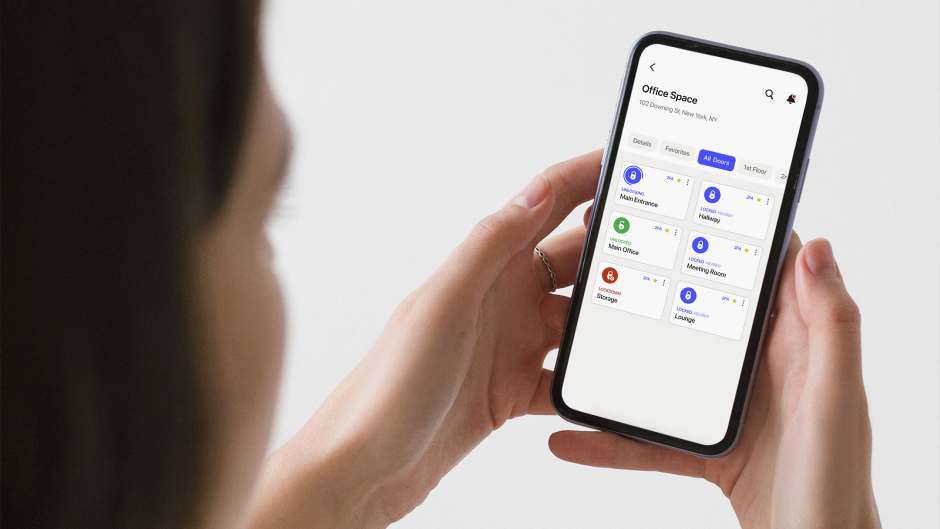
We’re continuing to see companies move away from on-premise solutions — according to Flexera, 92% of companies now have systems running in the cloud.
Cloud-based security systems are security infrastructures that use cloud services to store, manage, and analyze data related to physical and digital security. They let companies control multiple sites from a central online location. This means security teams can monitor and process data across all their sites in one place, rather than jumping between tools. Cloud-based systems are popular because they offer long-term scalability for businesses, centralize your security tools, and enable remote management and real-time threat detection and response.
In the past, some companies with established on-premise security systems may have been hesitant to switch to a cloud-based system. But it’s easier than ever to move over, which is why cloud-based systems are a top trend for 2025. Kisi makes it easier for companies using legacy tech to migrate to a cloud-based access control system by offering tailored deployment options to meet your needs. You can choose which part of the hardware, like card readers you get to keep. The security tech can be deployed across any existing door setup, including turnstiles, elevators, or smart locks.
4. Artificial intelligence #
2023 was a breakout year for AI in all industries. This trend rolled into 2024, and is still persistent in 2025, as AI capabilities within security tech are growing fast. More and more tools leverage AI to identify, prevent, and respond to emergency threats. For example:
- AI-powered surveillance and monitoring systems
- AI-enabled intrusion detection and prevention systems
- AI-assisted threat intelligence and incident response systems
AI tops the list of future tech investments that chief security officers (CSOs) plan to make over the next five years. According to G4S, 42% of CSOs plan to invest in AI and AI-powered surveillance in that time.
But while this tech is surging in popularity, it can pose a threat as much as it offers opportunities. A 2023 survey of 262 chief information security officers (CISOs) found that AI is the most often identified significant threat that CISOs are concerned about in the next five years. So, the more you and your team can learn about the benefits of AI, how to implement it effectively, and any inherent risks it presents, the better you can prepare your company to maximize its opportunity.
5. Biometrics and mobile access control #
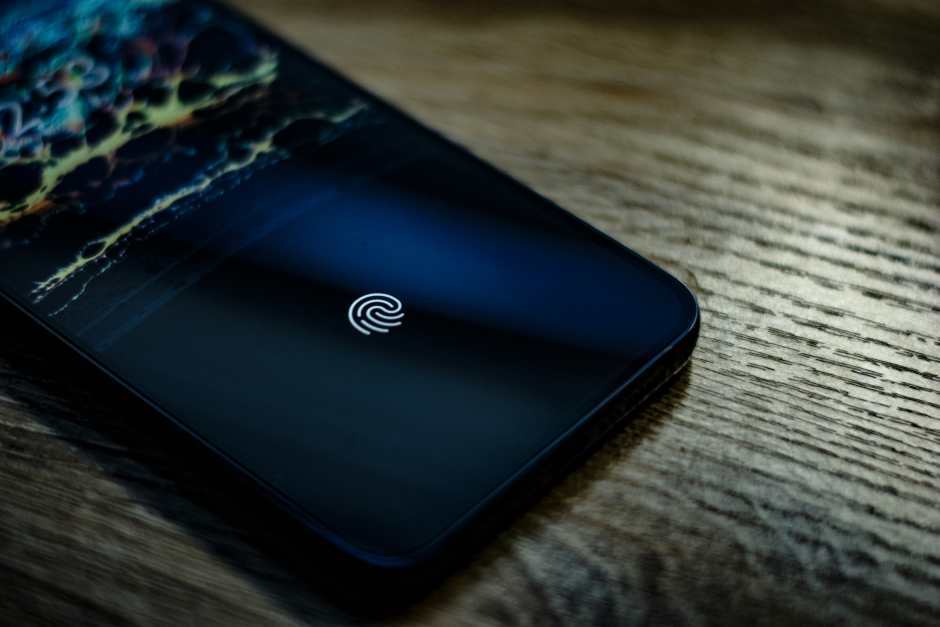
Biometric access control systems allow (or deny) individuals to enter your building, depending on whether their biometrics are in your system. Some common biometrics options include:
- Voice recognition
- Face recognition
- Fingerprint scanning
- Thermal scanning
Using biometrics for access to buildings and secure spaces has long existed in the world of sci-fi. But as using Face ID and fingerprint recognition to unlock our smartphones has become an everyday norm, it’s no surprise we’re seeing this trend increase within security tech, too. It’s nearly as popular as AI in terms of what CSOs plan to invest in over the next five years — 40% are planning biometrics and facial recognition tech investments in that time.
But while biometric access control offers huge benefits in terms of performance and versatility, many companies struggle to manage users’ concerns around privacy and how their biometric data will be used long-term.
To make the most of this trend, mobile access control combined with biometrics is a great option. People can use their mobile devices to access your facilities — and use their fingerprint or face recognition to access their phone. This way, you enhance security with biometrics 2FA, and save yourself the trouble of obtaining, maintaining, and managing this highly sensitive employee data.
6. Convergence of cyber and physical security #

Finally, we expect companies to take a more holistic approach to security. Nine in 10 CSOs feel their company leaders are more concerned with cyber than physical security. But physical security is still hugely important, especially as more companies return to the office.
To manage these changing leadership priorities, companies have to think differently about the setup of their security teams. Rather than having separate teams for IT, cybersecurity, and physical security, companies are bringing them together with one reporting line. In 2023, 20% of CISOs had physical security functional areas reporting to them — their role is no longer just focused on information or digital security.
By merging IT and physical infrastructure, companies stand to see several operational benefits:
- Eliminates redundancies where multiple tools or people have overlapping responsibilities
- Improves response times as information and alerts are centralized so security teams have better overall visibility
- Strengthens collaboration across security functional areas
Enhanced physical security and improved cybersecurity go hand in hand. If a hacker gains access to the physical location where your company’s secure data is stored, it increases their chance of a successful data breach. So robust physical security measures support your cybersecurity initiatives.
This convergence of digital and physical security closely connects to the trend of unifying security systems. If companies want to integrate all their security systems and tools, it makes sense for their teams to be better connected, too.
Be ready for the future of security technology #
Keeping up with changing trends, and continued investment in security technology, helps your business face the risks of tomorrow fully prepared. Companies need future-proofed security technology like Kisi — tools that connect to your existing hardware and software to enhance security while streamlining your operations.
With all these changing trends, the role of security tech remains the same: safeguarding your business’ people, assets, and physical spaces while saving time and streamlining operations. The right tech not only protects your business, it also gives users a better experience of accessing and using your work spaces.
